Note: This article’s statistics come from third-party sources and do not represent the opinions of this website.
If you live in the United States, it’s rare to leave your house without seeing some sort of chicken, whether it is alive and well in a backyard farm or being served between two buns for lunch. The number of chickens here in the U.S. continues to grow and become one of the top sources of meats across the globe. Worldwide there are roughly 25.9 billion chickens living. However, this rise in meat production is taking some tolls on our world and how it operates. If you’re an animal lover, even if you still eat meat, you know that some of the facilities chickens end up in are horrendous places. If we continue to increase demand, then how is the treatment of animals going to get better?
Let’s get into the most interesting chicken statistics of this year, where we look at global chicken statistics.

Top 13 Chicken Statistics
- There are roughly 25.9 billion chickens living in the world.
- There are roughly 518.3 million chickens in the United States.
- China is the leading producer of chickens, with over 5.14 billion chickens living in Mainland China.
- Iowa is the leading chicken farming industry with over 60 million chickens.
- Iowa is also the leading egg producer.
- The United States is the top producer of broiler chickens in the world.
- About 305 million hens are used for their eggs every year.
- All laying hens in the United States produced 111.6 billion eggs in 2020.
- Chicken consumption has increased 540% since 1910.
- Approximately 9 billion chickens are killed for their flesh each year.
- The number of mature chickens slaughtered is up 7%, and the number of young chickens slaughtered is up 13%.
- Young chickens are less than 40 days old before being killed.
- Most factory-raised chickens live under constant artificial light with less than 4 hours of darkness per day.


Chicken Population Statistics
1. There are roughly 25.9 billion chickens living in the world.
(Statista)
It’s not the easiest to put together an accurate number of exactly how many chickens are in the entire world. In general, a large majority of them are used for egg-laying hens and broiler meat production.

2. There are roughly 518.3 million chickens in the United States.
(Sentient Media)
You probably already knew that there were a large number of chickens in the United States. The country is covered in farmlands and a large majority of our population loves to eat meat of all kinds. This number could even increase over the next year.

Poultry Production and Consumption
3. China is the leading producer of chickens, with over 5.14 billion chickens living in Mainland China.
(Statista)
Of all the countries in the world, China is by far the biggest producer, raising over 5 billion chickens. The next highest is Indonesia followed by the United States, Brazil, and then Pakistan.

4. Iowa is the leading chicken farming industry with over 60 million chickens.
(Statista)
While all states in the U.S. produce chickens, some states are far more active than others. The leading state for the number of chickens is Iowa, with around 60 million chickens. Following Iowa are Indiana, Ohio, Pennsylvania, and Georgia. Still, Iowa has nearly 20 million more chickens than the next highest state.
5. Iowa is also the leading egg producer.
(CoopedUpLife)
On top of being the leading chicken producer, Iowa is also the state with the highest egg production. Iowa produces over 113 billion eggs every single year. The other top egg production states are Indiana and Ohio.
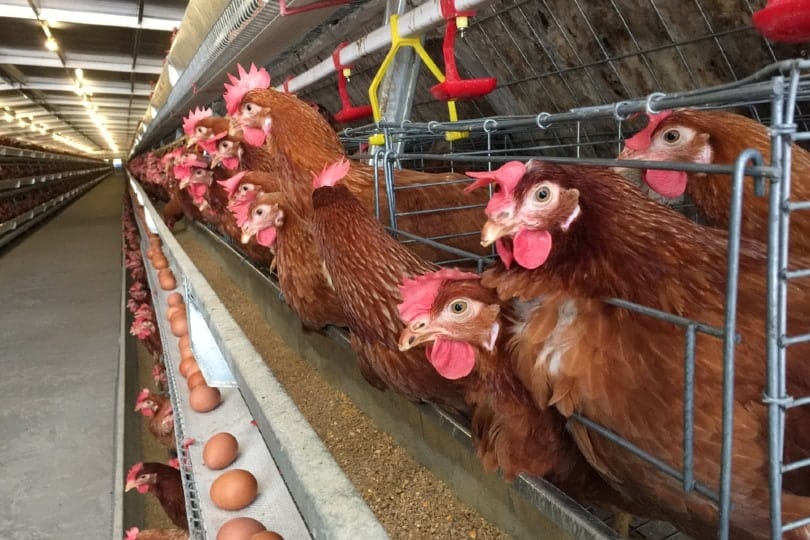
6. The United States is the top producer of broiler chickens in the world.
(Sentient Media)
Broiler chickens are chickens that are raised specifically for their meat. They are bred and raised to be an optimal size and health before getting slaughtered. Even though the United States doesn’t have the most chickens in the world, they are the leading producer of broiler chickens in the entire world. If that doesn’t say something about the increasing chicken consumption rates in the United States, we don’t know what does.
7. About 305 million hens are used for their eggs every year.
(PETA)
Now that you know how many broiler chickens are produced each year, how do you think that number correlates to egg production? Laying hens far outnumber the broiler chickens raised every year. Of all the chickens in the United States, nearly 305 million of them are laying hens.
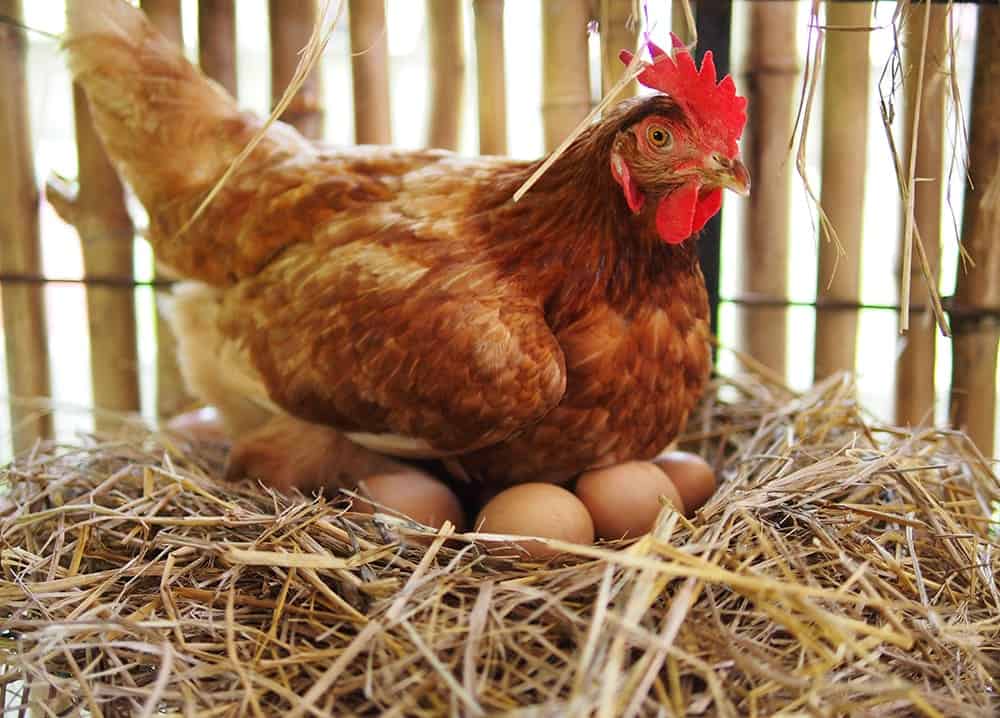
8. All laying hens in the United States produced 111.6 billion eggs in 2020.
(Sentient Media)
Obviously, chickens can lay a lot of eggs per year, but the actual number of eggs that each hen lays is pretty surprising. On average, each hen in the United States lays about 285 eggs per year. That is 30 times more eggs than chickens in the wild would lay. The hens are abused for being forced to work before being slaughtered around only 2 years of age.
9. Chicken consumption has increased 540% since 1910.
(Sentient Media)
If there is one thing that Americans love, it is meat. Americans consume about 275 pounds of meat every year, and of that 275 pounds, 122.75 pounds of poultry is consumed. Women tend to eat less than men, but the world’s meat consumption, in general, exceeds the recommended amount by national dietary guidelines.
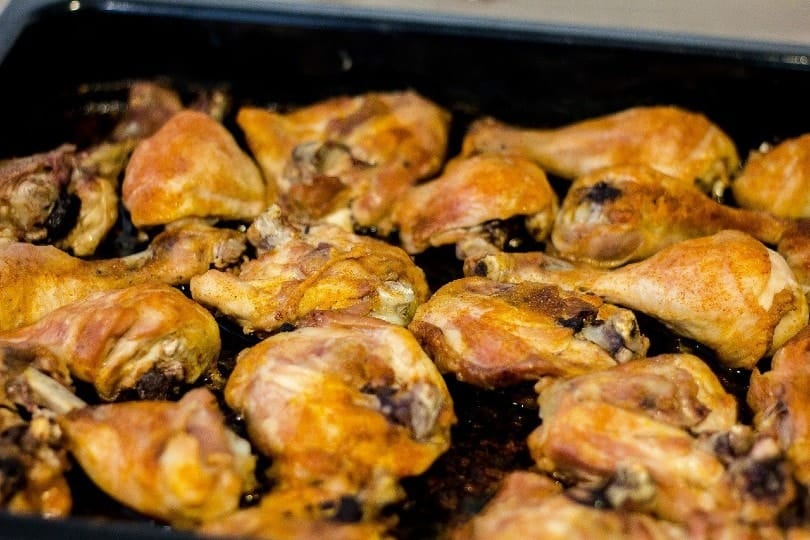

Chicken Slaughter and Abuse
10. Approximately 9 billion chickens are killed for their flesh each year.
(PETA)
It’s devastating once you learn how many animals lose their lives each year to meat production. About 9 billion chickens are killed for their flesh every year. Billions of others are kept alive for a couple of years before they are slaughtered as well.
11. The number of mature chickens slaughtered is up 7%, and the number of young chickens slaughtered is up 13%.
(USDA)
Of all the chickens killed per year, most of them aren’t even fully mature. These numbers continue to rise year after year and are projected to get even worse.
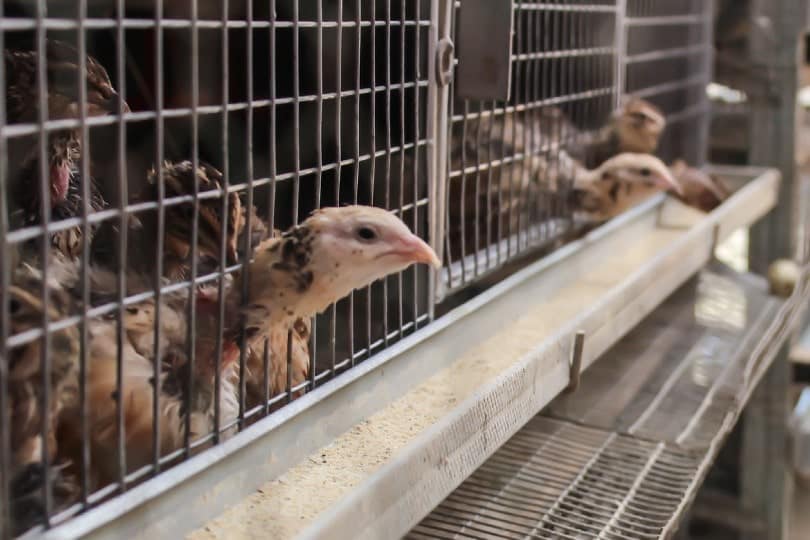
12. Young chickens are less than 40 days old before being killed.
(CIWF)
Under such intense conditions, chickens raised for meat are being killed the moment they reach an ideal size. Many chickens don’t live longer than 6 weeks in this industry.
13. Most factory-raised chickens live under constant artificial light with less than 4 hours of darkness per day.
(World Animal Protection)
Rest isn’t easy for chickens. Factories often keep the lights on to run their operations, and chickens here get less than 4 hours of darkness per day. They are often jammed alongside tens of hundreds of thousands at the same time.
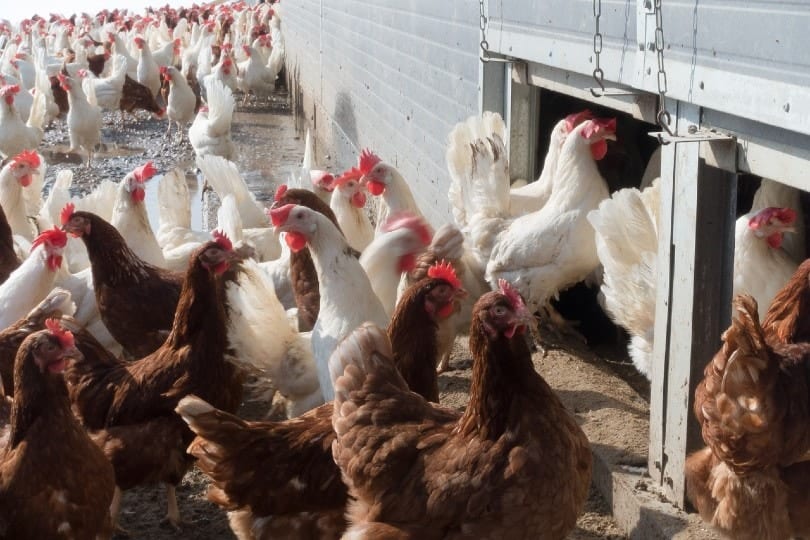

Frequently Asked Questions About Chicken Farming
Should I be concerned about antibiotics used in chicken farming?
There is a lot of misinformation floating around about antibiotics and farming. In general, farmers do use antibiotics to keep their flocks healthy and free from diseases. By the time the chicken is slaughtered, most of the antibiotics are gone from the meat. Whether or not eating trace amounts of it is dangerous, however, is still up for debate. One of the most significant risks in using antibiotics on animals so frequently is that they won’t work on humans as well in the future.
Why are chickens today so much larger?
Supply and demand run the current economy in the U.S. As the demand for poultry has increased, farmers have chosen to keep up by creating bigger chickens. Some of this is accomplished through genetic selection and improved nutrition, but they are sometimes made to look larger by plumping their meats with saltwater, stock, or seaweed extract.
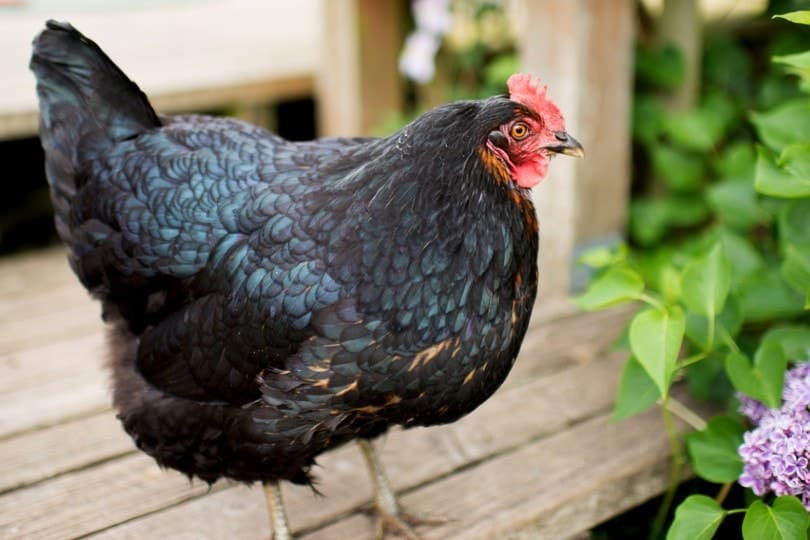
Is it better to buy cage-free chicken?
Labels are tricky in America. Advertising is often misleading and confuses many consumers. Cage-free doesn’t necessarily mean what you think it does. While there are definitely chickens kept in cages, even more are considered cage-free while still being packed inside a factory with thousands of other chickens. If you really want to consume poultry that has been raised outdoors, look for labels that say “pasture-raised”.
Related read:
- How Many Chickens Are There in the UK? (Chicken Statistics to Know in 2022)
- Which State Raises the Most Chickens?

Conclusion
It’s okay if you’re not a vegan or vegetarian. This article wasn’t created to force you to make an extreme lifestyle change. Instead, we hope that these statistics have helped you better understand what poultry consumption looks like in the United States and around the world. The only way to fix a problem is to become aware of it in the first place. Even if you can’t imagine cutting back on your meat intake, it could help stop the large corporations from factory farming and, instead, raise them in humane ways. Chickens are still animals and no different from the pets we let sleep in our beds. Even though we eat their protein to live, it is possible to reduce our consumption and save a few million animal lives in the process.
Featured Image Credit: C.Lotongkum, Shutterstock
